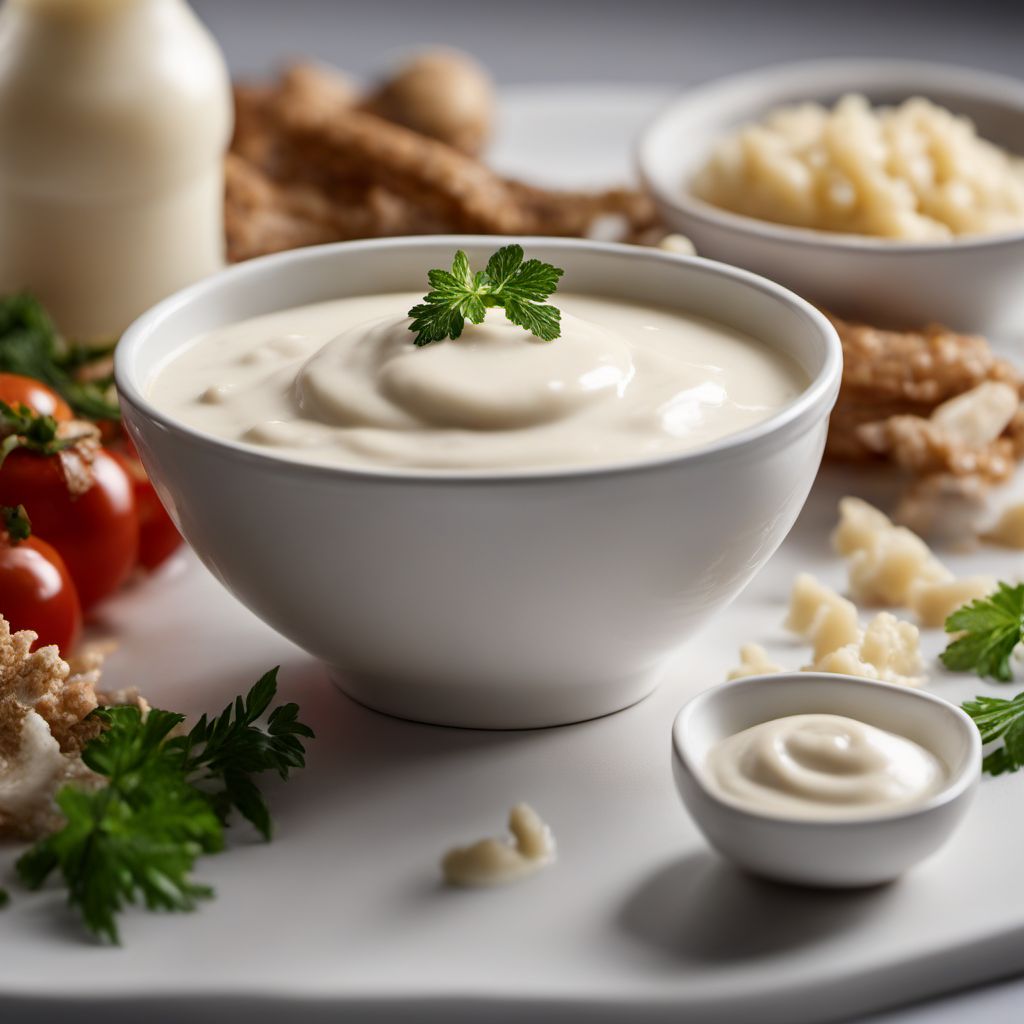
Ingredient
White sauces
The Creamy Elixir: Unveiling the Magic of White Sauces
White sauces are typically made from a combination of butter, flour, and milk or cream. They have a velvety texture and a pale, creamy color. The consistency can vary from thin and pourable to thick and luscious, depending on the desired application. White sauces are known for their ability to enhance the flavors of other ingredients while adding a luxurious touch to any dish.
Origins and history
The origins of white sauces can be traced back to French cuisine, where they were first popularized in the 17th century. The classic French white sauce, known as béchamel, served as the foundation for many other variations. Over time, white sauces spread to other European cuisines and eventually made their way into global culinary traditions.
Nutritional information
White sauces are relatively high in calories due to their butter and cream content. However, they also provide essential nutrients such as calcium, vitamin D, and vitamin A.
Allergens
White sauces may contain allergens such as dairy (milk and cream) and gluten (from flour). Individuals with lactose intolerance or gluten sensitivity should exercise caution when consuming dishes with white sauces.
How to select
When selecting white sauces from the store, look for brands that use high-quality ingredients and have a smooth and creamy consistency. Avoid sauces with artificial additives or preservatives. If making homemade white sauce, opt for fresh and organic ingredients for the best flavor and quality.
Storage recommendations
White sauces should be stored in airtight containers in the refrigerator. They can typically be kept for up to 3-4 days. To reheat, gently warm the sauce in a saucepan over low heat, stirring occasionally to prevent scorching.
How to produce
Amateur cooks can easily make white sauces by melting butter in a saucepan, adding flour to create a roux, and gradually whisking in milk or cream until the desired consistency is achieved. The key is to cook the roux until it turns a light golden color before adding the liquid.
Preparation tips
White sauces can be used as a base for various dishes such as macaroni and cheese, lasagna, or creamy soups. To prevent lumps, gradually add the liquid to the roux while whisking continuously. For a richer flavor, infuse the milk or cream with herbs, spices, or aromatics before adding it to the roux.
Substitutions
A suitable substitute for white sauces is a combination of olive oil, garlic, and vegetable or chicken broth, which can provide a similar flavor and texture. Another option is using coconut milk or almond milk for a dairy-free alternative.
Culinary uses
White sauces are widely used in dishes such as pasta Alfredo, gratins, creamy seafood dishes, and vegetable casseroles. They can also be used as a base for creamy salad dressings or as a topping for steamed vegetables.
Availability
White sauces are commonly available in grocery stores and supermarkets worldwide. They are also easily made at home using basic pantry ingredients.



